March 24, 2017 – LAKEWOOD, Colo. – Services have been restored to all state and county Colorado driver license offices. An overnight power outage affected the state computer network.
Blog
-
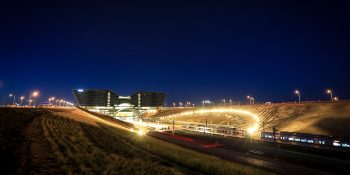
Denver International Airport To Turn Off Lights on ‘Mustang,’ ‘Shadow Array’ Art for Earth Hour
Iconic Denver Artwork to Go Dark for Global Event
DENVER — Denver International Airport (DEN) will join businesses, organizations and governments in cities around the world by turning off select lights for one hour this Saturday night as part of the global Earth Hour initiative.
This is the fifth year that DEN has participated in Earth Hour, which takes place from 8:30-9:30 p.m. on Saturday, as a symbolic recognition of the airport’s commitment to sustainability and reducing its environmental impact.

This year, DEN is supporting this global event by turning off the lights on the airport’s iconic “Mustang” statue and the “Shadow Array” artwork at the Hotel and Transit Center. Mustang, by artist Luis Jiménez, is a 32-foot-tall sculpture that stands along the roadway to and from the Jeppesen Terminal. Shadow Array was installed in 2015 by Denver artist Patrick Marold at the commuter rail entrance to the airport’s Hotel and Transit Center, and features 236 beetle-kill spruce logs that are illuminated at night.
“Denver International Airport works hard to be a sustainability leader within the aviation industry,” said Scott Morrissey, DEN’s senior director for sustainability. “Earth Hour is one small way we can highlight our commitment to implementing solutions that save money, improve operational efficiency and reduce emissions.”
The airport is also encouraging its employees to turn off other, non-essential lights during Earth Hour.
The Earth Hour event will not affect operations at the airport, and the lights will be turned back on at the conclusion of the hour.
Photos courtesy of Denver International Airport.
-
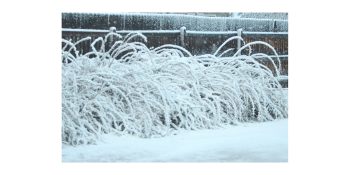
Most roadway closures lifted
As of approximately 1:30 p.m., many road closures resulting from last night’s blizzard-like conditions have been lifted.
The closure of I-70 between Airpark Road and Limon was first announced about 6:15 a.m. Reopened roadways include: Highway 86 between Kiowa and Limon, U.S. 24 between Colorado Springs and Limon, and Highway 94 between Colorado Springs and Highway 287.
In addition to reopening I-70 between Airpark Road and Limon, the Colorado Department of Transportation has opened U.S. 24 in both directions from Constitution to Limon. Colorado 94 is also open from U.S. 24 to Ellicott, but remains closed from Ellicott to U.S. 287. Highway 86 from Kiowa to Limon and I-25 from Walsenburg to the New Mexico border remain closed. Roads remain wet, slushy and icy in spots. Slower speeds are advised and high wind conditions remain.
I-25 between Castle Rock and Colorado Springs and Highway 83 between Franktown and Colorado Springs were reopened at approximately 8 a.m.
At approximately 11 a.m., the National Weather Service lifted its Blizzard Warning for central and east Adams and Arapahoe counties and north and northeast Elbert County under 6,000 feet, including the communities of Bennett, Strasburg Byers, Deer Trail, Leader, Agate, Hugo, Limon and Matheson.
The amount of total snow accumulation has been slightly downsized from last night from 5-10 inches to 3-7 inches, but 30-45 mph winds, with some gusts up to 60, from the north continue to provide additional headaches.
For updated weather forecasts, visit http://forecast.weather.gov. For road condition updates, visit www.cotrip.org. Additional information will also be updated on www.i-70scout.com.

-
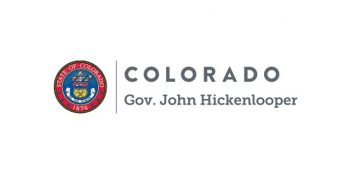
Driver license offices closed.
March 24, 2017 – LAKEWOOD, Colo. – All state and county Colorado driver license offices are currently unable to issue documents. An overnight power outage affected the state computer network.
The state is working to resolve the issue as soon as possible and apologizes for the inconvenience.
-

TODAY’S EVENTS – Friday, March 24
WHAT’S GOOD TODAY?
-
Adult Book Club
Anythink Bennett library @ 10:30 a.m. “East of Denver” by Gregory Hill
-
Front Range Airport Advisory Board
Second floor conference room in terminal @ 1 p.m.
EVERY FRIDAY
-
Al-Anon family group
For more information call (303)888-4525.
-
Story Time
Kelver Library, Byers @ 10 a.m.
-
Handiwork Hangout
Anythink Bennett library @ 1 – 4 p.m. Adults can share new knitting, crocheting, embroidery or other handiwork projects. Help is available for new crafters.
SCHOOLHOUSE NEWS
-
Deer Trail, Strasburg & Bennett: LAST DAY OF SPRING BREAK!!
-
Bennett Baseball (V) @ St Mary’s Tourney – All Day
Like, Follow & SHARE to get your daily dose of Tips, Tricks, News and Events! @I70Scout
-
-
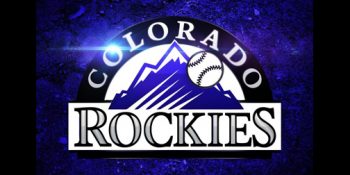
COLORADO ROCKIES TRANSACTIONS
SCOTTSDALE, AZ — The Colorado Rockies announced today that they have optioned right-handed pitcher Jeff Hoffman to Triple-A Albuquerque.
The Rockies have 44 players in Major League Spring Training camp, including 11 non-roster players.
Visit our website at www.rockies.com for tickets and information.
-
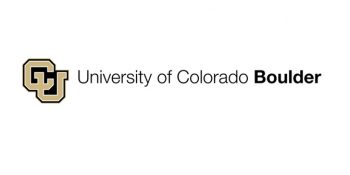
Federally funded laboratories, institutions have $2.6 billion annual impact in Colorado
Federally funded research facilities in Colorado contributed an estimated $2.6 billion to the state’s economy in 2016 and supported more than 17,600 jobs, according to a new report from the University of Colorado Boulder Leeds School of Business.
The report—Economic and Fiscal Impacts of Federally Funded Research Facilities in Colorado, FY2013-FY2015—also shows how 33 federally funded laboratories help make Colorado a national center for research and innovation.
“Colorado’s federally funded research labs fuel our innovation economy,” Colorado Gov. John Hickenlooper said in a statement released by CO-LABS. “Their impact is far reaching, attributing to Colorado’s high-quality talent pool and expanding into our startups and private industry. These labs help to ensure our state’s future progress.”
This is the fourth economic impact report produced by the Leeds School of Business for CO-LABS, Colorado Leveraging Assets for Better Science. Previous CO-LABS and Leeds economic impact studies were released in 2013, 2011 and 2008.
For the latest report, the Leeds School’s Brian Lewandowski surveyed Colorado’s 33 federally funded research laboratories, from the Crops Research Laboratory in Fort Collins to the National Oceanic and Atmospheric Administration in Boulder and the National Renewable Energy Laboratory in Golden. He collected detailed data on employees’ educational attainment, organizational budgets, spinoff companies, technology transfer and more.
The study also summarized the federal science funding landscape, drawing from national reports to highlight Colorado’s top-tier ranking among states in funding from the U.S. Department of Commerce (second), Department of Interior (second), NASA (third), Environmental Protection Agency (fifth) and National Science Foundation (sixth).
Among Lewandowski’s findings:
- The estimated economic impact of federally funded laboratories in Colorado in fiscal year 2015 was $2.6 billion; it was $2.5 billion in fiscal years 2013 and 2014.
- Colorado’s federally funded labs directly employed nearly 7,800 people in FY 2015, and supported an additional 9,800 jobs through the multiplier effect (people employed by instrument makers, utility companies, etc.).
- In the latest year available, 2014, Colorado’s scientists and research groups received funding support from many agencies, making the state one of the top in research funding from departments such as Commerce and Interior, and agencies such as NASA and the National Science Foundation.
- Colorado’s federally funded scientists live in 30 of the state’s 64 counties, with the highest number in Boulder, Larimer and Jefferson counties.
- Ten labs reported active commercialization programs, from tech transfer and licensed technology to spin-off companies and public-private partnerships with shared space or equipment.
“Colorado’s federal research facilities conduct wide-ranging basic and applied research that results in scientific and ‘commercializable’ research advancements,” said Brian Lewandowski, associate director of CU Boulder’s Business Research Division. “Beyond the research, these facilities play an important economic function in the Colorado economy, including employing a body of highly educated researchers and through the purchasing of goods and services within the Colorado economy.”
A critical finding in the report is that federal investments in this state support a strong scientific and technical workforce. Of those employed in federal laboratories, 55 percent have master’s or doctoral degrees, compared with 15 percent statewide; and Colorado ranks fourth among states for the percentage of the workforce engaged in science and engineering jobs.
That expertise has a strong effect on the state’s powerful innovation economy. Highly educated and trained workers leave federal employment to form spinoff companies and others develop technologies based on discoveries and inventions coming out of the research laboratories. Many of the state’s federally funded research laboratories work within powerful partnerships that include industry and academia.
“We found that the labs add value in dollars, jobs and beyond,” added Brian Payer, CO-LABS Board Chair and Program Manager of Strategic Operations for Sphera. “We learned about tremendous synergy between the laboratories, businesses and the community. The labs spur innovation through spin out companies, technology licensing, cooperative work agreements, and access for formal and informal conversations with world-class experts across an incredible breadth of disciplines. In addition, we learned that people want to live here, making it easier for the labs to recruit top-notch talent to the state.”
Work conducted in Colorado’s federally funded research laboratories is also critical to protecting lives and property. A NOAA research group in Boulder, for example, works on weather modeling innovations that improve forecasting, especially for high-impact storms. These innovations give emergency managers and others better information, earlier.
That team developed the HRRR, or High-Resolution Rapid Refresh model, now used in the 122 National Weather Service offices around the country.
“NOAA’s research efforts have been crucial to improving the forecasts of hazardous aviation weather, which impacts the safety and the efficiency of the National Airspace System,” said the Federal Aviation Administration’s Steve Abelman.
The FAA has long supported NOAA’s weather research efforts, and the outcomes have included validation of turbulence, in-flight icing and thunderstorm forecasts now used operationally in the national airspace, according to Abelman. “Long-term research has led to new and improved weather prediction models such as the High Resolution Rapid Refresh, which is integrated into FAA decision-making every day,” he said.
“The collective impact of the labs’ research also ripples out to every state in the country,” said Dan Powers, executive director of CO-LABS. “Ranging from partnership agreements to licensing of technology to outright free access to the research from these taxpayer-funded labs, thousands of companies throughout the United States representing hundreds of thousands of jobs utilize this science in ways that make us healthier, safer, more sustainable and global leaders in innovation.”
-
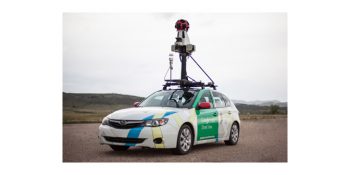
Google Street View cars are eyes on the ground for urban methane leaks
FORT COLLINS – A set of Google Street View mapping cars, specially equipped with cutting-edge methane analyzers, are allowing Colorado State University researchers to “see” invisible methane leaks from natural gas lines beneath our streets.
The technical and computational challenges of measuring methane, and the complex methodologies used to collect, analyze and publicize the data, are detailed in a new paper in the journal Environmental Science and Technology March 22.
The groundbreaking project is led by Joe von Fischer, CSU associate professor in biology, in partnership with the non-profit Environmental Defense Fund (EDF), and Google Earth Outreach. von Fischer’s CSU co-authors include researchers from statistics (Dan Cooley), atmospheric science (Russ Schumacher), and soil and crop sciences (Jay Ham), as well as experts from University of Northern Colorado and the nonprofit science collective Conservation Science Partners.
Data from the project are helping utilities, regulators and advocacy groups reduce wasteful and environmentally damaging leaks faster and more cost effectively.
Besides being the main ingredient in natural gas, methane is also a potent greenhouse gas, with over 80 times the warming power of carbon dioxide over a 20-year timeframe. Growing awareness of this climate risk has spurred new interest in finding and fixing low-level leaks throughout the natural gas supply chain, including local utility systems, where many low-level leaks can persist for many years. That need has spawned a new kind of science.
“This is a huge challenge that almost nobody had been thinking about. Now we’re finding out just how widespread these leaks are,” von Fischer said. “The faster you fix them, the bigger the environmental benefits are. But utilities and regulators didn’t have the data to focus their efforts. That’s where we come in. Our goal is to make it faster, cheaper and easier to find and measure methane leaks from natural gas lines to help accelerate crucial repairs.”
For the Google project, von Fischer and colleagues were especially eager to identify and quantify methane leaks from the nation’s urban areas, where natural gas distribution pipelines lie several feet below the ground. Their EDF Google Street View project is a first-of-its-kind, comprehensive inventory of methane leak sources within cities. The goal is to shine a powerful light on this previously invisible, hard-to-define problem.
A chief motivation of the project is to help utility companies and governments prioritize leak repairs based on the magnitude of emissions. The researchers calculate that fixing the largest 8 percent of leaks would cut pipeline methane emissions by 30 percent. The New Jersey utility company PSE&G has approved almost $1 billion worth of upgrades directed in part by the CSU researchers’ data.
IR laser tech
The baseline technology that’s allowed the project to bloom is an infrared laser methane analyzer. These mobile instruments, which didn’t even exist a decade ago, can identify plumes of methane gas in real time, without the need for a gas chromatography analysis in the lab.
“The air contains gases that make it look foggy in the infrared spectrum,” von Fischer explained. “The laser can scan through colors of infrared light and ‘see’ how much methane is present.”
At the core of the effort is a set of algorithms and protocols that provide accurate accounting of methane leaks, including the size of the plumes.
Field testing on a runway
Before they took their technology into Street View cars, the researchers first ran preliminary tests with research vehicles driven around campus and on the tarmac at Christman air field in Fort Collins. This included controlled releases of methane in both open and urban environments.
The project has involved designing optimal routes for the Google drivers, while keeping the drivers’ interaction with the equipment passive and simple. The researchers have also developed methods for screening out false positive readings – for example, how to tell the difference between a true methane leak, and a wayward reading from a landfill or nearby power facility.
For von Fischer, a classically trained ecosystem ecologist, the project has stretched him as a scientist and has catalyzed interactions with a dizzying array of disciplines. “I regularly talk with lawyers, industry people, statisticians, computer scientists, atmospheric physicists, Google….this is just a part of my life now,” he said.
Ongoing efforts
At present, there are four Google Street View cars in various cities carrying the CSU methane analyzers, as von Fischer and colleagues’ work continues. The drivers are instructed to drive all the roads in a predetermined area to capture leak data that the CSU researchers download, analyze, and upload to a public website hosted by EDF.
To deal with the enormous streams of data the project produces – about 2,000 data points per minute – CSU computer science researcher Sangmi Pallickara is creating a cloud-based platform to manage, store and present the data.
So far, the CSU methane analyzers have provided leak maps of Boston; Burlington, Vermont; Chicago; Dallas; Indianapolis; Jacksonville; Los Angeles; Mesa, Arizona; Pittsburgh; Staten Island, New York; and Syracuse, New York.
Among other things, they’ve reported that, on average, Boston, Staten Island and Syracuse – cities with old, corrosion-prone distribution lines – had leaks that released 25 times more methane per kilometer of road (2 liters of methane per minute per kilometer) than Burlington and Indianapolis (0.08 liters of methane per minute per kilometer).
-
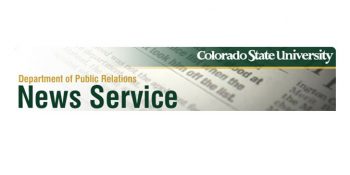
“The Answer to Cancer May Be Walking Right Beside Us”
FORT COLLINS — “The Answer to Cancer May Be Walking Right Beside Us,” a documentary produced by Colorado State University and Rocky Mountain PBS, will air nationally on public television stations starting in April 2017.
The film, which showcases comparative oncology, or how human and animal doctors can work together to beat cancer, first aired in September 2016 on Rocky Mountain PBS. It will be available on public television through the National Educational Telecommunications Association, which includes stations in 42 states, starting April 7.
The documentary will next air on stations through The Programming Service for Public Television, which includes more than 33 stations across the country, in June.
Rocky Mountain PBS will air the film on April 3 at 9:30 p.m., April 7 at 10:30 p.m., and April 20 at 7:30 p.m.
Cancer is cancer
“Cancer is cancer,” said Dr. Rodney Page, CSU professor and director of the Flint Animal Cancer Center. “The same mechanisms that result in cancer in humans are operative in dogs, and are operative in other animals as well. The aspect that is valuable is the information that can be gathered through well-done clinical studies in companion animals with naturally occurring cancers.”
The documentary’s theme is “opportunity.” The project was spearheaded by CSU videographer Joe Vasos and Vice President for External Relations Tom Milligan, in collaboration with the Flint Animal Cancer Center.
“Cancer experts at Colorado State University have long advocated the value of comparative oncology in the fight against cancer in all species,” said Milligan. “We hope this documentary will help spread this message to a broad audience.”
This is the fifth CSU-led project that Rocky Mountain PBS has co-produced or aired on behalf of the university.
“We have been longtime partners in education with CSU and we are deeply appreciative of this opportunity to collaborate with such a prestigious institution and its esteemed faculty and staff,” said Amanda Mountain, Rocky Mountain PBS CEO. “We are happy to help spread the impact of such a powerful documentary.”
Canine cancer treatment outcomes understood quickly
Dogs age much faster than people, meaning canine cancers and treatment outcomes may be observed in much less time. Dr. Cheryl London, a research professor at the Cummings School of Veterinary Medicine at Tufts University, said that in studying companion animal cancers through clinical trials, outcomes may be understood in two years, a fraction of the five to 15 years it normally takes to determine if a new drug or procedure is successful through human cancer trials.
London was recently featured on CBS Sunday Morning, where she talked about her collaborative research on bone cancer with Dr. Katie Janeway at Dana-Farber/Boston Children’s Cancer and Blood Disorders Center.
CSU’s documentary features researchers and clinicians from CSU, Duke University, the American Cancer Society, the National Cancer Institute, the Fred Hutchinson Cancer Research Center, The Ohio State University, North Carolina State University, Purdue University, Tufts University, the University of California Davis, Children’s Hospital Colorado, the University of Illinois and the University of Wisconsin.
Watch the trailer for the documentary on CSU’s YouTube channel.
Consult your local listings for more details on broadcasts of “The Answer to Cancer May Be Walking Right Beside Us.”
-

Dems Stand Again for Gun Safety
State Affairs Kills 3 Bills Seeking Proliferation of Guns, High-Capacity Magazines
The six Democrats on the House State, Veterans, & Military Affairs Committee stood with parents and teachers this afternoon when they defeated a bill that would have laid the foundation for more guns in schools.
SB17-005 would have allowed any teacher in Colorado who completes an employee handgun safety course to carry a concealed handgun in their classroom.
“I’ve heard from parents and teachers and so many constituents in my district—they don’t want this and they don’t feel it would make them any safer,” said Rep. Susan Lontine, D-Denver. “Teachers should not be asked to take on the role of law enforcement or security guards. Teachers are in schools to teach.”
“This bill may create an opt-in for school districts, but it wouldn’t be an opt-in for the parents who don’t want their kids to be in a classroom with an armed teacher,” said Rep. Jovan Melton, D-Aurora. “Because in many districts, there’s not another school for their children.”
Testimony against the bill included many parents and educators concerned about the danger of more guns in schools.
“I ask you as a mother and a teacher to vote no on this bill,” testified Rachel Barnes, a Colorado resident and mother.
Later in the evening, the committee also defeated SB17-006, which would have lowered the age requirement to 18 years for members of the United States military to apply for concealed carry permits without adequate safeguards, and SB17-007, which would have allowed Coloradans to buy and sell magazines of any size, including the 100-round magazine used by the shooter in the Aurora theater massacre in July 2012.